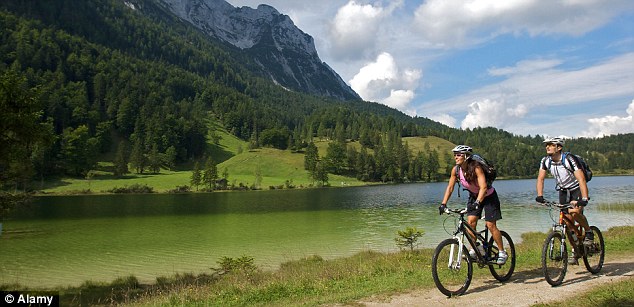by Mindy Fried | Jun 24, 2012 | adventure, connections with people, giving advice, hitchhiking, making choices, memories, parenting, resiliency, sociological imagination

When I was in my early 20s, I spent a summer hitchhiking across America. I was with a good friend, Ingrid, who was ready for an adventure, and off we went with our forty-pound backpacks, starting in New York State and landing a few months later in California. Each driver who picked us up presented another set of wonders, as we listened with fascination to stories about their lives, and shared stories from our journey. One driver who picked us up in Kansas told us all about her research on Sudden Infant Death Syndrome, which required that she travel across three states to visit research sites. A young person anxious to find a career, I was blown away with how cool that sounded, but we were nearly blown away when her tire exploded. Luckily – and luck was what you needed when you were hitchhiking – we were just pulling into a gas station. Unluckily, it was July 4th and the mechanics couldn’t fix the tire until the next day. We slept in the car that night inside a stuffy garage, which was offered to us as a safe haven.

When we were moving up the coast of California, a driver picked us up in a mobile home he was hired to transport. When we hopped in, we discovered two other hitchhikers, and soon found that both of them had just been released from a local prison. They had committed minor economic crimes, or so they said. Another ex-convict joined us along the way, and we all slept that night in the van. But something obviously went awry during the night, because we woke up the next morning to our driver speeding down the road and screaming at high volume to one of the women, “I’ve got a bone to pick with you!”.
Ingrid and I never found out what that bone was, but we mousily asked to be let off at the next rest stop because we said that was our destination. As he drove away, we hid behind a bush, waiting for him to leave, and then went back out on the road with our thumbs ready to find our next ride. He knew we were lying and drove around in a circle, finding us back out on the highway. We did not get back into his mobile home, and survived to tell the tale.

Hitchhiking in America was pretty standard fare for a sub-culture of counter-cultural Americans in the 70s. And two young women going on the road “alone” wasn’t considered outrageous, because we were caught in the tide of a rising second wave of the women’s movement where females could do (almost) anything. While we knew we were dancing with danger, we had youth on our side, and the sense that we could handle whatever we encountered. Later I took my travelling skills to a nearly year-long trip in Europe, and continued to welcome adventure along the way. Sometimes I think my sociological imagination was birthed on these trips.
Now I am a mother whose young adult daughter is travelling – not with her thumb – but with a bike and a girlfriend – through Europe. Unlike my travels which happened sans parental approval or even knowledge, I am in the know about this trip, thanks to a very different kind of parental-child relationship in this 21st century, and a smart phone that supports that. I am caught between experiencing vicarious thrills and experiencing terror, because I know that sometimes things can go very right and sometimes they can go very wrong.
They have been biking for over a month, and still, every morning when I wake up and look at the clock, I add six hours, and imagine what my daughter and her friend are up to. Are they on a beautiful, winding country road, biking next to sheep grazing on the side of the road? Or are they on a jagged, narrow road where cars are, at best, only nearly missing them? Have they encountered the kindness of strangers? Or have they experienced “near misses”?
Both of my trips were much less structured than my daughter’s. If I ever feared for my life during my hitchhiking trip across the U.S, it vanished the second we moved on to the next ride. Even when one of our drivers had a bayonette on his dashboard, I felt invincible and maintained my faith in the goodness of people. With my trip to Europe, which I had spent one whole year saving up for, I was part of a sub-culture of young travelers like myself, populating hostels, walking the streets with our oversized backpacks, and finding bargain meals to stretch out funds for as long as possible. My daughter and her friend are more like speedy turtles, carrying minimal clothing, a tent and other supplies on their bodies and bikes, as they follow roads through small villages and towns, and bike along the side of lakes and rivers.
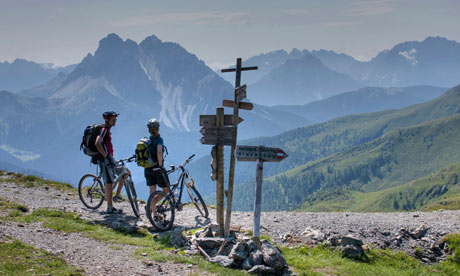
When they get a flat on the side of the road, they are only more fully a part of the scenery, and even a conversation piece for the locals. They are couch-surfing, taking advantage of a miraculous network of people who offer their homes to strangers, supported by an on-line forum where people post their availability and travelers contact them. Former couch-surfers can review their experience so that prospective ones can evaluate their options. Couch surfers even evaluate the travelers too. My daughter told me that after they left their first couch surf home, their host posted that she and her friend were “like sisters and made me smile the whole time of their visit”. For the most part, life for them has been pretty darn good, even great.
Unlike with my trip, where I didn’t talk to my parents at all, my daughter and I talk every few days, thanks to Skype, and when there’s a problem, we talk more than once a day. Forty years ago, I didn’t want to talk to my parents, and maybe because it wasn’t an option, I didn’t miss it one iota. Now I can’t imagine being on my parents’ end of things, not knowing where I was or what I was doing for many months at a time. I am relieved that I can check in with my daughter, and that she has a blog page that narrates her travels with glorious pictures! I doubt that I did more than send my parents a few postcards. At the same time, just because I can stay in touch, the challenge is to not hover, because the reality is that if there is a problem, there is very little I can do from thousands of miles away, other than listen and maybe help them solve it themselves.

As our children grow up, I “get” that we need to let go, to allow them to spread their wings and learn from experiences, both good and bad. But it’s a scary world, and sometimes I’m just frightened. I’m not naïve about the potential dangers out there, but at the same time, for two young women to explore the world – especially from the vantage point of a bicycle – it is just incredible. Some friends have told me how cool I am to “let her go” on the trip; others tell me they would never have approved a trip like this. But I did. (Did I really have a choice?) And in good part, I did because my parents didn’t stop me from exploring, even though they had no idea what they should have protected me from.
I imagine that for the next few weeks – the amount of time remaining in this trip – I will calculate the time zone differences and imagine where they are in their journey. I will control the amount of contact I initiate, but will steadily follow their blog and Facebook posts. I know that the life lessons gleaned from this challenge will be more potent without mommy. And I will continue to be caught in this odd place between vicarious pleasure and terror.
by Mindy Fried | May 8, 2012 | arts, depression, education, finding work, graduating from college, making choices, unemployment, women and work
As our daughter goes into her final year of college, I have begun to feel a sense of trepidation about what comes next. The seniors I taught this past semester are already going into panic mode as they face a very uncertain future. Regardless of all the internships and community service experiences they are accruing, there’s no avoiding the dour statistics for young college graduates. When one student came to me, asking for advice about applying for a consulting job that was way beyond her reach, I found myself counseling her about the virtues of working in a coffee shop. So what if she’s an international relations major!
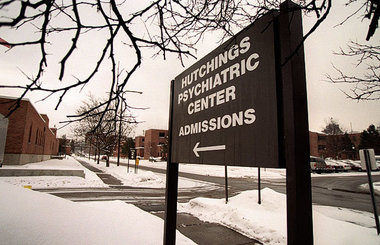
My first “real” job after graduating college was working in a state psychiatric hospital. This seemed like a “natural” place to be, since one whole side of my family was riddled with serious psychiatric disorders. Between an aunt with agoraphobia who never left her house, an aunt and an uncle who had “manic-depression” (now called bipolar disorder, a much more “respectable” name), and a mother who struggled with clinical depression and alcoholism, I was quite at home working in an institution for people with severe mental health problems.

I had been a dancer for many of my young years, and my professional goal – if one could call it that– was to somehow combine my interest in helping people with my passion for dance. I lucked out, since the field of dance therapy was just emerging, and one of the first certified dance therapists in the U.S. was willing to train me during my senior year of college. When I graduated, the state psych hospital was hiring tons of young college graduates. This was the early ‘70s, when thousands of patients, people who had spent years, sometimes decades, living in inside the walls of state hospitals, were released into the community in a move to “de-institutionalize” them. The motive was humanitarian, but the upshot for many of the patients was downright cruel. Nonetheless, it did mean that a lot of my friends and I had jobs.
I was hired as the institution’s dance therapist – and worked with people who were still living “inside” the institution, as well as out-patients that were being transitioned into a day treatment program. I fell in love with schizophrenics who were smart and spoke in metaphors that seemed poetic and deep. Because I was a professional dancer in a mental hospital, many of the institution’s rules did not seem to apply to me. Or at least that’s what I thought and how I behaved… More than once, I led a group of patients in a snake line through the hallways, and we seemed off-limits to criticism, as this “crazy” activity was “therapy”! It felt downright revolutionary!
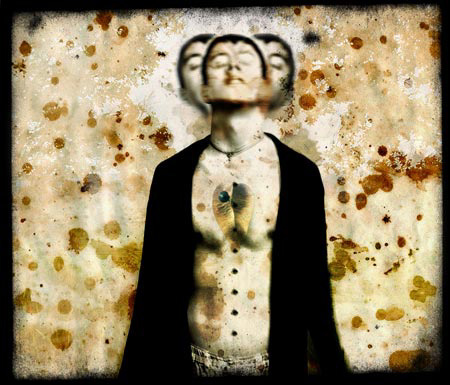
While this experience – working in an institution – wasn’t where I “landed” professionally, it was nothing short of a profound experience. I will never forget one of my out-patients, a diminutive woman named Ruth, who had spent her entire adult life imprisoned in the psych hospital. Ruth held her body like a tight fist, and stood all day, rocking rhythmically back and forth. I still feel teary when I think about her. There was another man who is seared in my mind: a tall, broad gentleman in a perpetual cowboy hat who people called “the Captain”. He was a man of few words, and those words were garbled, but he had a jovial demeanor. One of my most glorious days with him was when I took him for drive in the country, with two other patients. Outside it was minus forty degrees; but inside the car, with sun shining through the windows, it felt warm and protective. He said little throughout this drive, just smiled…

By the time I had been hired to work as a dance therapist at the state psych center, sociologist Erving Goffman had already published his seminal book Asylums: Essays on the Social Situation of Mental Patients and Other Inmates. One of Goffman’s greatest contributions was his critique of what he called “total institutions”, which included mental hospitals and prisons. Goffman argued that total institutions had a high degree of regimentation, and an elaborate privilege system. He described relations between staff and patients (or inmates) as caste-like, with detailed “rules” of deference and demeanor. One of the my favorite co-workers at Hutchings, a friendly and clever guy named Willie who was the janitor, surely understood Goffman’s analysis when he changed his first name from Willie to “Doctor”. Whenever anyone wanted his services, they would yell “Doctor” and he came running with a smirk on his face.
I knew nothing of Goffman while I was working in an institutional setting. But now, as I reflect on my first post-college job, and after studying this brilliant sociologist in graduate school and using his analyses in a class I now teach about the sociology of aging, it all comes back to me. First, I lived what Goffman described and then I was able to understand his theoretical frameworks, drawing upon my own experience. As my father used to say, everything we do in life accrues and has meaning. This has to be true, as well, for college students who are graduating to a lousy economy and a dearth of employment opportunities that “fit” with their majors.
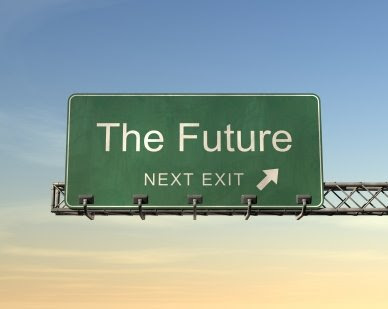
Despite the draw of my first job, I realized within a year that I wasn’t going to last. I was too young, too inexperienced and too critical of the institution to stay. While I found the out-patients I was assigned to counsel interesting, I had no real training. And even though I was a good listener, I fought back tears every time a “client” expressed sadness or joy. What drove me to work at this state psych hospital – working with really troubled people – ultimately became the reason I had to leave. Ultimately, it wasn’t the right fit, even though it seemed right at the time. With a far more robust economy than we have today, I had saved up enough cash that year to travel in Europe for nearly a year, and that’s what I did!
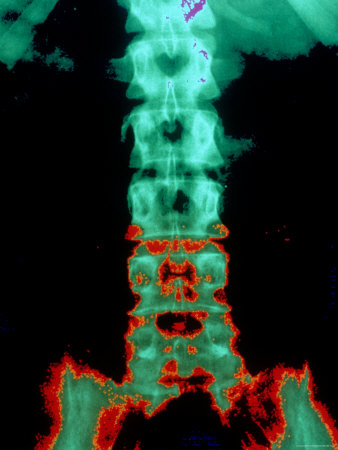
While my career as a dance therapist came to a halt, my original passion – dance – continued to be my life-line for decades until around ten years ago, when I experienced a serious injury. For a year, I was in persistent pain and could barely move, much less dance. With the sudden loss of the activity that centered me and gave me such joy, I plunged into a deep depression and felt overtaken by panic, fearful that I would never heal. Like many back-pain sufferers, I bounced around to various practitioners, many of whom got frustrated with me because I wasn’t getting better. In one pain clinic, a doctor yelled at me, saying that I was fine. In another back healing program, a doctor challenged ME to figure out what the problem was, because she could not. Other practitioners told me that I wouldn’t heal if I stayed depressed and anxious. A true chicken and egg problem…
During this time, I had a glimpse of what my patients from many years before had experienced. The one person who comes to mind, in particular, is a young woman who was around my age and had participated in an ongoing dance session I held for outpatients. I never knew what her story was; only that she was struggling with depression and had obviously spent time in the hospital itself, which meant that she had been in the role of “patient”, complete with the dehumanization that comes with that experience. She came up to me after one of our dance sessions and thanked me, saying it was the one thing in that setting made her feel “normal”.

How are young, college-educated people dealing with this lousy economy, saddled with debt and poor prospects for a job? A number of young people I know are living at home, and working in unpaid internships that they hope will lead to a paid job. I know one young person who dropped out of college in her freshman year and learned how to do organic farming. Now she’s running a business where she creates peace gardens for interested clients. And I know another young person who couch-surfed for a few months, and then got a job sailing someone’s boat down to the Virgin Islands. At one point, during an intense storm, he wondered if he was even going to make it… I can imagine that he is not the only one feeling that way.
Over time, I have come to realize that we humans are drawn to different types of work at different stages of our lives, and often there is a reason. I happened to work at a mental hospital because it grabbed me emotionally – and that’s where there were jobs. But even then, when the economy was decent, that first job out was hit or miss. The thing that sustained me was dance. It continues to be my way in, and my way out. When I think about my own daughter – and all the young people I encounter these days – what I wish for them is the courage to follow their passion, and then feel okay about whatever job or internship (or whatever) they find, knowing that those things may not be the same thing. At least for now.




